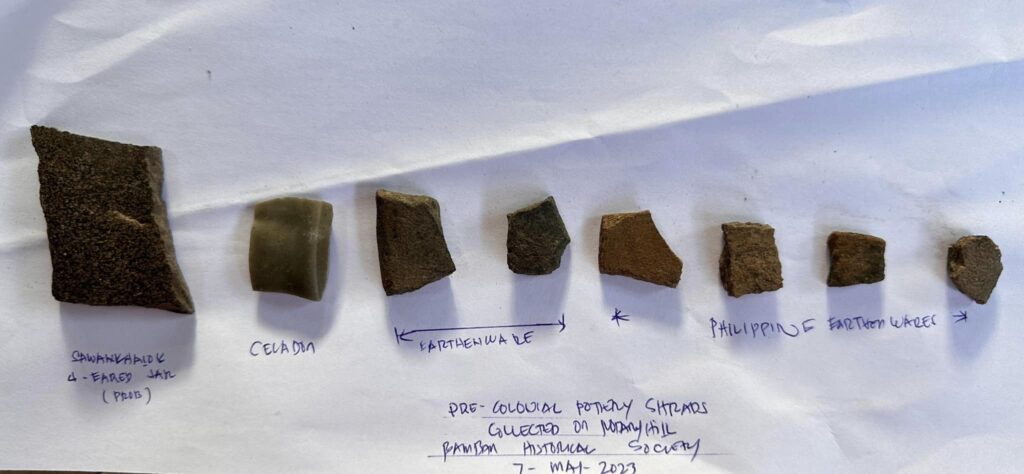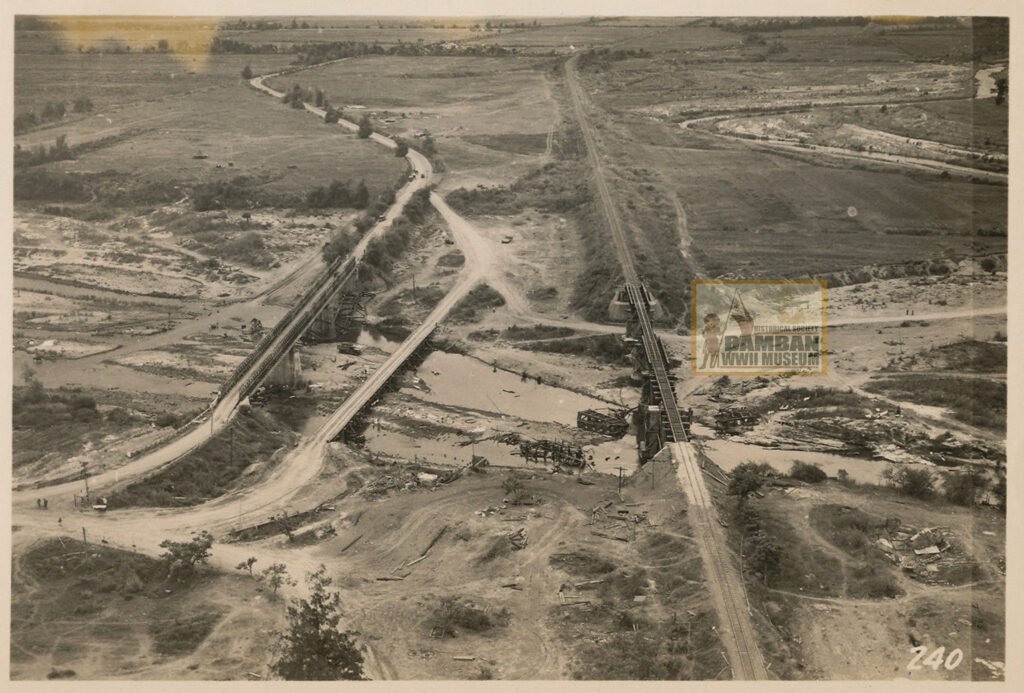
40th Division U.S. Army Photo.
THE BAMBAN BRIDGES: FROM PHILIPPINE-AMERICAN WAR TO WWII
During WWII, there were two high multiple-span steel bridges traversing the Paruao River, the vehicular bridge and the railroad bridge. Bamban was one of the towns of Tarlac were both important transportation routes passed. To the west, were the high ground of the Bamban Hills, overlooking the two vehicle and wagon roads. In History, the Bamban Bridge became part of the battlefields on the two wars; the Philippine-American War on November 11, 1899 and in WWII (December 31, 1941 and January 1, 1942 and in January 23, 1945).
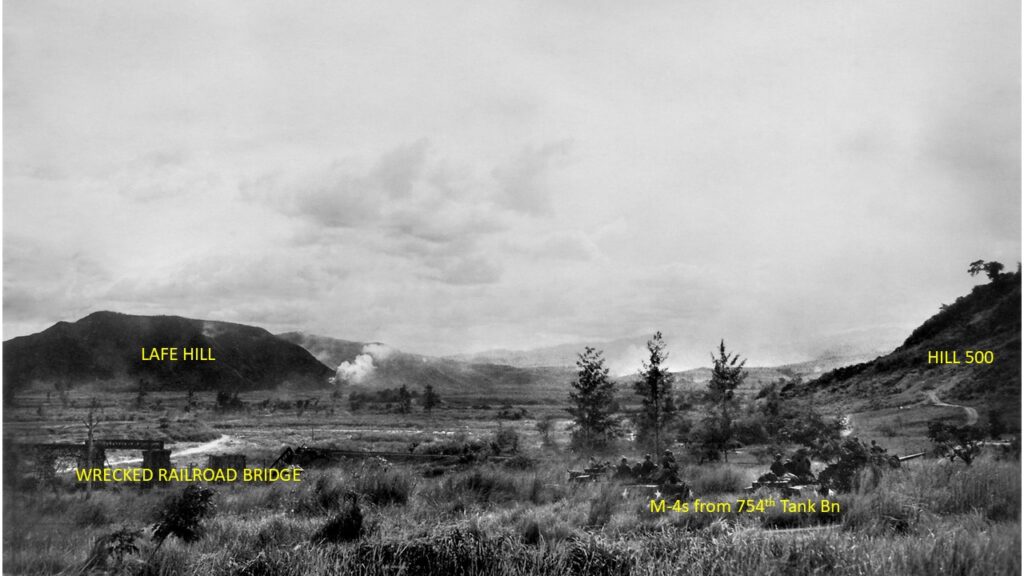
40th Division U.S. Army Photo.
This is an aerial view of the Bamban vehicular bridge located on the left of the image, with the temporary bridge constructed by the 115th Engineers, 40th Division U.S. Army. To the right, is the railroad bridge, the original bridge was completed in 1892 and opened for traffic as part of then Manila-Dagupan Railroad Line. The 40th Division had undertaken massive photograph documentation of the Bamban, aside from the ground, the 40th Division Artillery, using the Piper L-4 Grasshopper, were used to conduct aerial combat videos and photographs after Liberation, mostly in the month of February 1945.
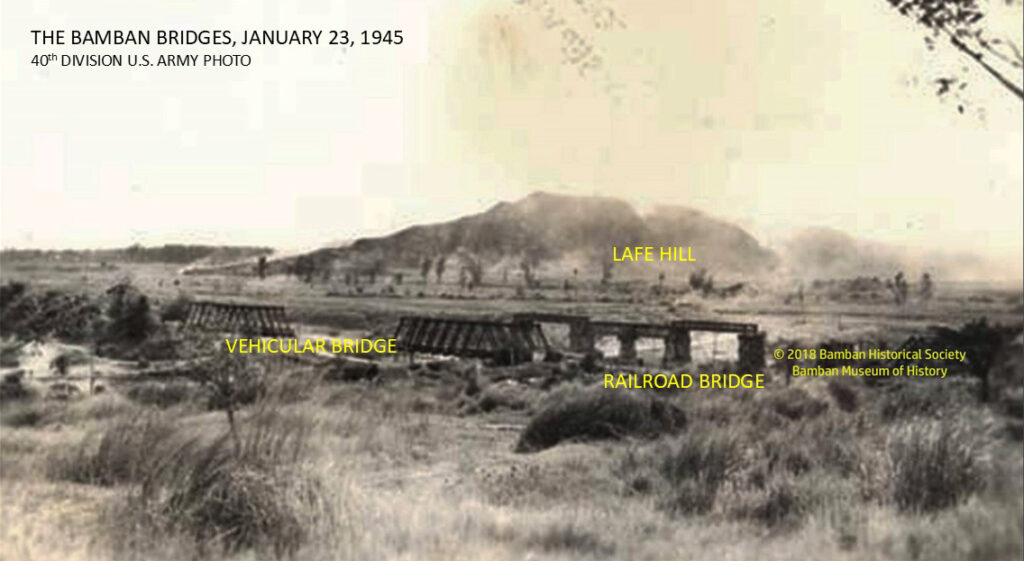
40th Division U.S. Army Photo.
The vehicular and railroad bridges of the Bamban were heavily bombed by the U.S. 5th Air Force in January 1945. Members of the local USAFFE guerrillas, the Bamban Battalion conducted sabotage operations on the bridge as well, and fought the Japanese soldiers . A similar sabotage operation was conducted by Filipino guerrillas that when the Japanese Imperial Navy 1st Combined Air Fleet moved its headquarters to Bamban Hills in late November 1944, they already reported a big hole at the center of the bridge, which prevented heavy equipment and tanks to cross said bridge.
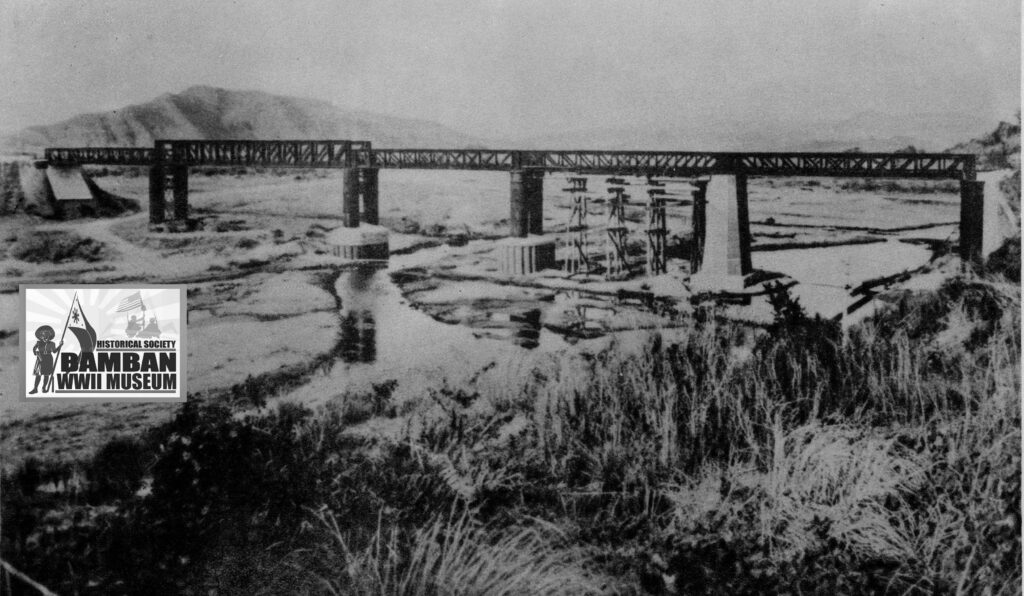
Terrain Study No. 94 Central Luzon Volume 2 Photographs – Allied Geographical Section
Further down the history of WWII, it was on the same bridges, that the USAFFE forces, during the retrograde movement from Lingayen to Porac, made a gallant stand on December 31, 1941 and January 1, 1942. The 21st Division Philippine Army defended the Bamban Line, or the USAFFE Defense Line No. 5 anchored on the hills immediate to the west of the town, the Paruao River, the municipal road and most importantly, the Bamban Bridges against Japanese Kanno Detachment, 9th Infantry and other supporting troops in the advance. The fighting around these Bamban Bridges aside from the infantry, also included artillery duels, tanks and Japanese aircraft participating in the action. The first officer of the 21st Division Philippine Army; Lt. Gregorio L. De Gracia, was killed during the defense of the Bamban Bridge.
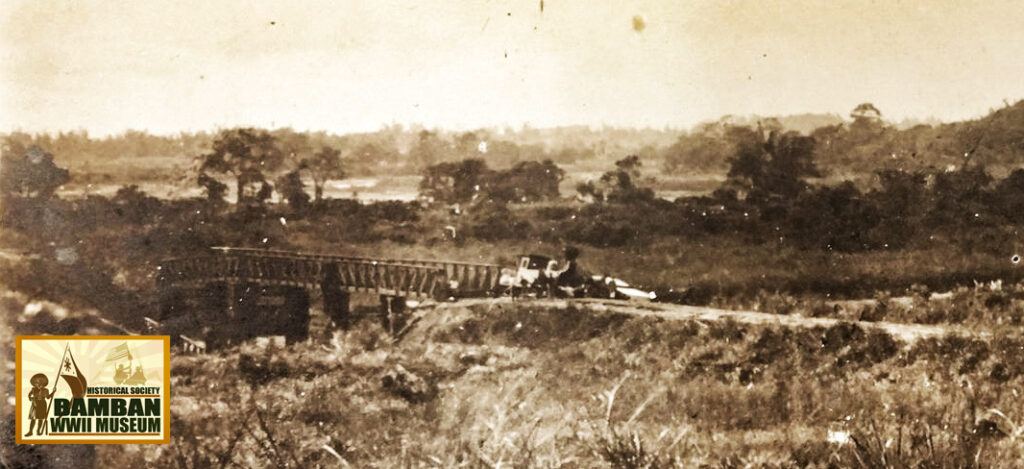
U.S. National Archives and Records Administration NARA photo, courtesy of Dave Metherell and Scott Slaten.
As the Bamban Bridges were near the Bamban Sugar Central which was a Japanese army base during the Occupation, there was a sentry posted immediately after the Bamban vehicular bridge. My own grandfather, Macario W. Dela Cruz, who was a member of Company A, Bamban Battalion, Bruce Guerrillas, while working at the sugar central, was tasked to monitor Japanese troop movements and vehicles passing along these Bamban Bridges and provide intelligence report to the Bamban Battalion Headquarters.
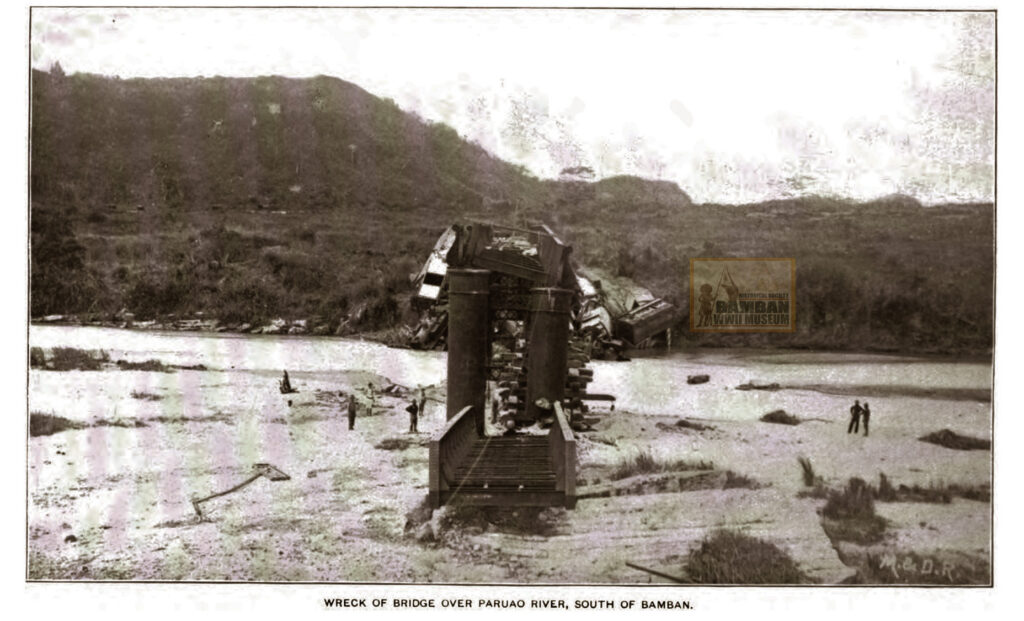
Photo from the Report of the Lieutenant General Commanding the Army. Annual Reports of the War Department for Fiscal Year Ending June 30, 1900.
From WWII, let us go down further into the history lane on the Bamban Bridge, during the Philippine-American War, where the Filipino soldiers entrenched on the north side of the bridge fought the advancing Americans under General Arthur MacArthur on November 11, 1899. During the river-crossing of the American soldiers, Filipino soldiers opened fire and volleys on the American infantry.
Today, there is only Bamban Bridge, the sleek “basket handle Nielsen-Lohse” vehicular bridge, is an iconic bridge design that was first in the Philippines.
So, when passing by the Bamban Bridge, history should be remembered when Filipinos, Americans and Japanese fought in and around the area of this iconic bridge.
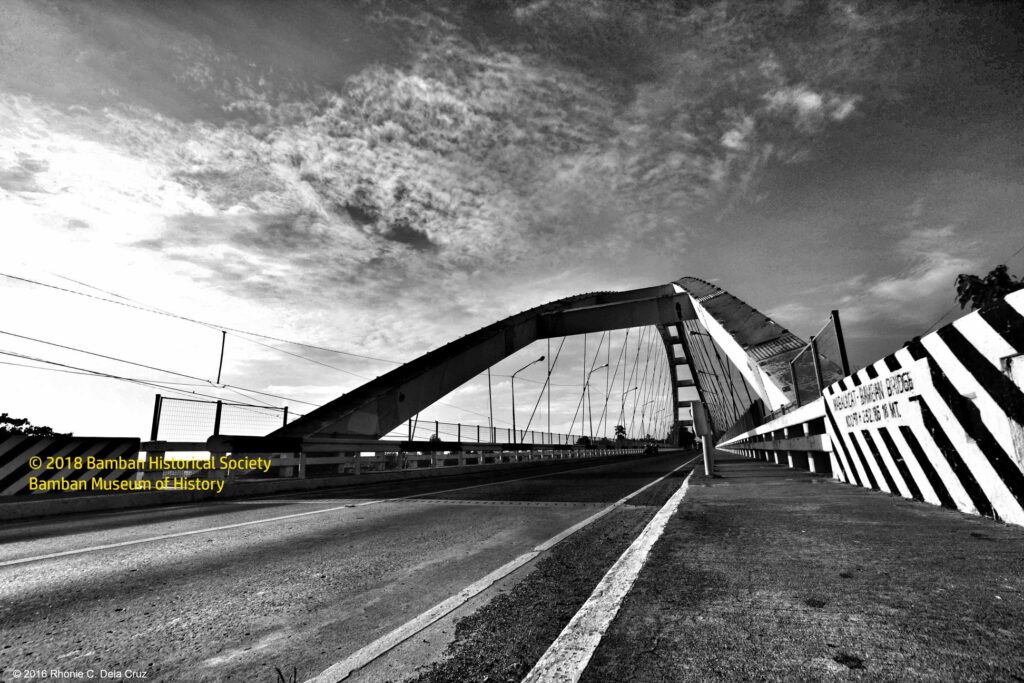
Rhonie Dela Cruz photo.
PHOTOGRAPHS
(1) Aerial view of the Bamban Bridges, vehicular and railroad, repaired by the 115th Engineers, 40th Division U.S. Army, February 1945.
40th Division U.S. Army Photo.
(2) The wrecks of the Bamban railroad bridge, with the M4 “Sherman” medium tank from the 754th Tank Battalion, assisting the 3rd Battalion, 160th Infantry 40th Division advance to Hill 500, Bamban. Photo may be dated January 24, 1945 during the advance to Hill 500. 40th Division artillery fires on the base slope of Lafe Hill.
40th Division U.S. Army Photo.
(3) The Bamban vehicular and railroad bridges, wrecks in the aftermath of guerrilla sabotage operations and aerial bombardments from the U.S. 5th Air Force. Note the massive artillery barrage at Lafe Hill.
40th Division U.S. Army Photo.
(4) The Bamban Railroad Bridge, pre-war.
Terrain Study No. 94 Central Luzon Volume 2 Photographs – Allied Geographical Section
(5) The Bamban Railroad Bridge, most probably early November 1899. One of the earliest photographs taken of the Bamban, this image shows the north side of the wrecked bridge, with the 3 remaining span still standing. Note the train locomotive and car on the right side of the bridge entrance.
U.S. National Archives and Records Administration NARA photo, courtesy of Dave Metherell and Scott Slaten.
(6) View of the wrecked Bamban railroad bridge, overlooking west with present Rotary Ridge. American soldiers are on the dry riverbed of the Paruao. Photo may be dated mid-November 1899, after the capture of Bamban on November 11, 1899.
Photo from the Report of the Lieutenant General Commanding the Army. Annual Reports of the War Department for Fiscal Year Ending June 30, 1900.
(7) The present Bamban Bridge, a basket handle Nielsen-Lohse design, one of the most iconic bridge in the country.
Rhonie Dela Cruz photo.

